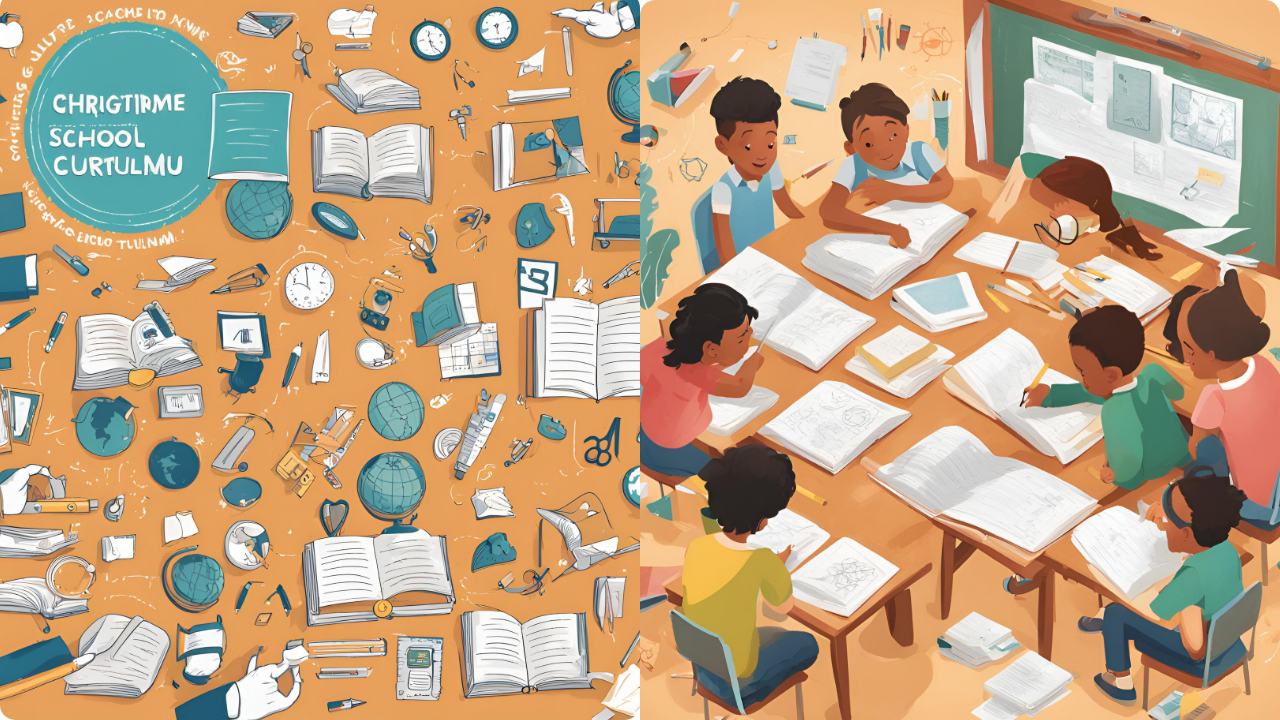Table of Contents
Introduction
Definition of School Curriculum
A school curriculum outlines the structured educational experiences provided by schools. It encompasses academic content, pedagogical strategies, assessments, and extracurricular activities aimed at holistic student development.
Importance of the School Curriculum
The school curriculum is crucial as it shapes students’ knowledge, skills, attitudes, and values. It prepares them for higher education, employment, and responsible citizenship, impacting individual and societal progress.
Historical Development of the School Curriculum
Early Educational Practices
Early education systems were often informal, focusing on apprenticeships and religious teachings.
Evolution Through the Ages
Significant reforms in the 19th and 20th centuries introduced standardized curricula, emphasizing core subjects like reading, writing, and arithmetic.
Modern Educational Theories
Contemporary curricula incorporate theories from educational psychology, emphasizing student-centered learning, critical thinking, and interdisciplinary approaches.

Key Components of the School Curriculum
Core Subjects
Core subjects such as Mathematics, Science, Language Arts, and Social Studies form the foundation of most curricula.
Elective Courses
Electives allow students to explore interests in arts, music, technology, and physical education, promoting well-rounded development.
Extracurricular Activities
Activities like sports, clubs, and community service enhance social skills, leadership, and personal growth.
Assessment and Evaluation
Methods include standardized tests, projects, and formative assessments to measure and improve student learning outcomes.
Curriculum Development Process
Stakeholders Involved
Teachers, administrators, policymakers, parents, and students contribute to curriculum development.
Steps in Curriculum Design
The process involves needs assessment, goal setting, content selection, pedagogical strategies, implementation, and continuous evaluation.
Types of Curricula
National Curriculum
Standardized across a country, ensuring consistency in education quality and content.
State/Provincial Curriculum
Tailored to regional needs, reflecting local culture, economy, and priorities.
International Baccalaureate (IB) Curriculum
Offers a global perspective, fostering international-mindedness and academic rigor.
Montessori Curriculum
Focuses on child-led learning, hands-on activities, and mixed-age classrooms.
Waldorf Curriculum
Emphasizes creativity, imagination, and holistic development through arts and experiential learning.
Curriculum Models
Subject-Centered Curriculum
Focuses on mastery of specific subjects, often through direct instruction and rote learning.
Learner-Centered Curriculum
Prioritizes students’ interests, needs, and learning styles, encouraging active and experiential learning.

Problem-Centered Curriculum
Integrates real-world problems and interdisciplinary approaches to foster critical thinking and problem-solving skills.
Implementing the Curriculum
Teacher Training and Professional Development
Ongoing training ensures teachers are equipped with current knowledge, skills, and teaching strategies.
Classroom Management Strategies
Effective management promotes a positive learning environment, minimizing disruptions and maximizing engagement.
Integrating Technology
Incorporating digital tools enhances learning experiences, providing access to diverse resources and interactive content.
Curriculum Evaluation and Revision
Methods of Evaluation
Feedback from students, teachers, and assessments inform curriculum effectiveness.
Continuous Improvement
Regular updates ensure the curriculum remains relevant, challenging, and aligned with educational standards and societal needs.
Challenges in Curriculum Implementation
Resource Limitations
Funding, infrastructure, and materials can affect the quality and consistency of curriculum delivery.
Teacher Resistance
Adapting to new curricula can be challenging, requiring support and professional development.
Diverse Student Needs
Addressing varying abilities, backgrounds, and learning styles requires flexible and inclusive approaches.
Future Trends in Curriculum Development
Personalized Learning
Tailoring education to individual students’ needs, preferences, and pace through adaptive technologies.
Interdisciplinary Approaches
Integrating multiple subjects to provide holistic and relevant education.
Global Citizenship Education
Fostering awareness of global issues, intercultural understanding, and civic responsibility.
Emphasis on STEM and STEAM
Promoting science, technology, engineering, arts, and mathematics to prepare students for future careers.

FAQs
What is a school curriculum?
A school curriculum is a comprehensive plan outlining the educational experiences provided by schools, including academic content, teaching methods, assessments, and extracurricular activities.
Why is the school curriculum important?
The curriculum shapes students’ knowledge, skills, attitudes, and values, preparing them for higher education, employment, and responsible citizenship.
What are core subjects in a school curriculum?
Core subjects typically include Mathematics, Science, Language Arts, and Social Studies.
How is a school curriculum developed?
Curriculum development involves needs assessment, goal setting, content selection, pedagogical strategies, implementation, and continuous evaluation, with input from various stakeholders.
What are some common types of curricula?
Common types include national, state/provincial, International Baccalaureate (IB), Montessori, and Waldorf curricula.
What are the challenges in implementing a school curriculum?
Challenges include resource limitations, teacher resistance, and addressing diverse student needs.
What are future trends in curriculum development?
Future trends include personalized learning, interdisciplinary approaches, global citizenship education, and emphasis on STEM and STEAM.




